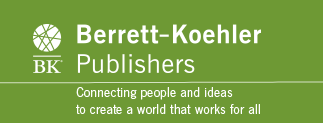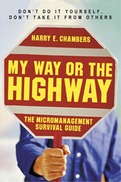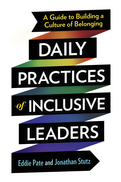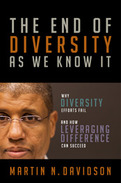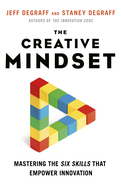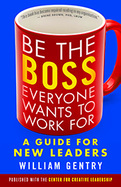- By the author of the bestselling Bad Attitude Survival Guide (more than 40,000 copies sold), named one of the top business books of 1998 by Executive Book Summaries
- Everyone thinks they know what micromanagement is, but this book presents a specific, detailed definition illustrated with concrete examples
- Offers successful strategies for overcoming your own micromanaging behavior and for responding when you are being micromanaged
2009
Amy Sheldrake, young mother and killer whale trainer-in-training, marvels at the complex behaviors her superiors at SeaWorld are able to coax out of these enormous beasts, while she and her husband struggle to make their beloved—and much smaller—son Josh obey the simplest rules. Using the story approach popularized by Ken Blanchard in his many bestsellers, this unique parenting book draws on the experiences of two of the coauthors—as both pioneering marine mammal trainers and as parents—to show how the same principles that induce killer whales to leap into the air can persuade young children to go quietly to bed.
Like Amy and her husband Matt, once you get the hang of the three Whale Done principles, you'll see a dramatic difference in overcoming challenges like following bedtime routines, dealing with tantrums, introducing new foods, sharing, avoiding overuse of the word no, learning to care for a pet, and instituting time-outs.
Diversity and inclusion training and books have flooded the market, but the gap between what is promised and what is delivered is beginning to undermine the progress that has been made.
There are millions of people who strive to make a difference in workplace diversity and inclusion. And with this practical, leader-friendly framework, Daily Practices of Inclusive Leaders will equip readers with the actionable tools they've been searching for.
Leaders will learn:
● Why they are the key to inclusion
● Insights for the lifelong journey
● Successful practices they can start today
● And more
With the era of big DEI coming to an end, leaders will make big strides through small daily changes in their processes that lead to creating an inclusive workplace culture. With this toolkit of actions, activities, and tactics leaders will become the foundation of diversity and inclusion in their organization.
The idea for this book came to Martin Davidson during a disarmingly honest conversation with a CFO he worked with. Look, the executive said, clearly troubled. I know we can get a diverse group of people around the table. But so what? What difference does it really make to getting bottom-line results?
Answering the so what? led Davidson to explore the flaws in how companies typically manage diversity. They don't integrate diversity into their overall business strategy. They focus on differences that have little impact on their business. And often their diversity efforts end up hindering the professional development of the very people they were designed to help.
Davidson explains how what he calls Leveraging Difference turns persistent diversity problems into solutions that drive business results. Difference becomes a powerful source of sustainable competitive advantage instead of a distracting mandate handed down from HR.
To begin with, leaders must identify the differences most important to achieving organizational goals, even if the differences aren't the obvious ones. The second challenge is to help employees work together to understand the ways these differences matter to the business. Finally, leaders need to experiment with how to use these relevant differences to get things done. Davidson provides compelling examples of how organizations have tackled each of these challenges.
Ultimately this is a book about leadership. As with any other strategic imperative, leaders need to take an active role-drive rather than just delegate. Successfully leveraging difference can be what distinguishes an ordinary organization from an extraordinary one.
- Offers an alternative that turns diversity from an organizational obligation to a source of innovation, energy, and commitment
- Analyzes why existing diversity programs have failed to be sustainable or to contribute to the bottom-line success of the organization
- Provides case examples from the authors research and global consulting practice
The idea for this book came to Martin Davidson during a disarmingly honest conversation with a CEO he worked with. Look, the executive said, clearly troubled. I know we can get a diverse group of people around the table. But so what? What difference does it really make to getting bottom-line results?
Answering the so what? led Davidson to explore more deeply how companies typically manage diversity. He saw there were serious problems. Companies werent effectively building diversity into their larger business strategy. Also, the emphasis on common differences like gender, age, race, and sexual orientation was interfering with the ability to identify less obvious differences that have more impact on a business. And traditional diversity efforts were often hindering the professional development of the very people they were designed to help.
In his book, Davidson explains how what he calls Leveraging Difference turns persistent diversity problems into solutions that drive business results. Difference becomes a powerful source of sustainable competitive advantage instead of a distracting mandate handed down from HR.
To leverage difference, Davidson argues, leaders must tackle three challenges. First, they must identify and hire for the differences most important to achieving organizational goals, even if the differences arent the obvious ones. Second, leaders must help employees work together to understand the ways these differences matter to the business. And finally, leaders must roll up their sleeves and experiment with how to use these relevant differences to get things done. Davidson provides several examples of how organizations leverage subtle differences like culture, thought, and personality as well as more noticeable differences like race and gender.
Ultimately this is a leadership book, not a diversity book. Actively leveraging difference, rather than reactively managing diversity, can be what distinguishes an ordinary organization from an extraordinary one.
2020
—Mitch Jacobson, Executive Director, Austin Technology Incubator, UT Blackstone LaunchPad, University of Texas at Austin
Nearly all of today's major innovation workshops and programs call on organizations to drive innovation. What they miss is that innovation comes from the personal creativity of individuals. And creativity doesn't require an advanced education or technical skills—all employees can be creative. Often, all they lack is a fitting mindset and the right skills.
The Creative Mindset brings how-to advice, tools, and techniques from two master innovators who have taught and worked with over half of all Fortune 500 companies. Jeff and Staney DeGraff introduce six essential creative-thinking skills that can be easily mastered with limited practice and remembered as the acronym CREATE: Concentrate, Replicate, Elaborate, Associate, Translate, and Evaluate. These six skills, sequenced as steps, simplify and summarize the most important research on creative thinking and draw on over thirty years of real-world application in some of the most innovative organizations in the world.
It's time to rethink the way we make innovation happen. Individual creativity is an immense untapped resource, and you don't have to be Beethoven to make a big difference. As the spirit of chef Gusteau proclaims in the Pixar classic Ratatouille, “Anyone can cook.”
You've been promoted to leadership—congratulations! But it's nothing like your old job, is it? William Gentry says it's time to flip your script.
We all have mental scripts that tell us how the world works. Your old script was all about “me”: standing out as an individual. But as a new leader, you need to flip your script from “me” to “we” and help the group you lead succeed. In this book, Gentry supports and coaches you to flip your script in six key areas. He offers actionable, practical, evidence-based advice and examples drawn from his research, his work with leaders, and his own failures and triumphs of becoming a new leader. Get started flipping your script and become the kind of boss everyone wants to work for.
